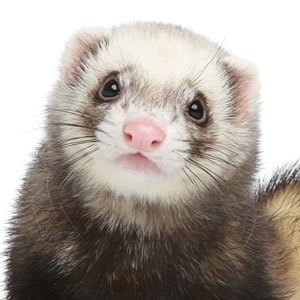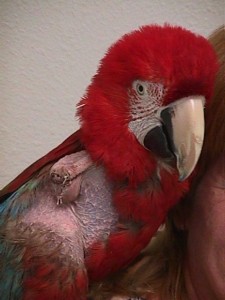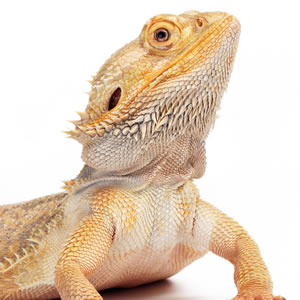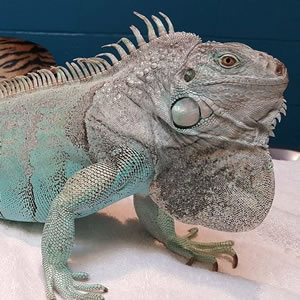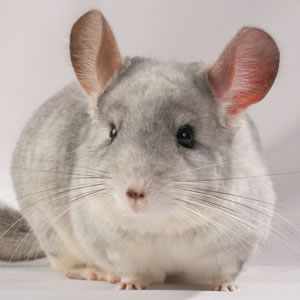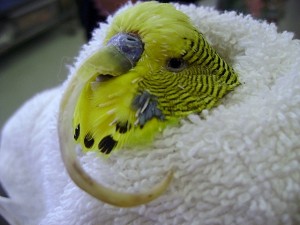Common Avian Emergencies
The critically ill avian patient The most commonly presented avian emergency is that of the critically ill bird. Most often these are birds are found on the bottom of the cage with little if any history of prior signs of illness. The symptoms, visual examination, and initial diagnostics will often establish the direction of treatment ... Read more
Care and Feeding of Ferrets
When they are very young Vaccinations Kits (young ferrets) should be vaccinated for distemper at 8,* 12 and 16 weeks of age then at one year of age. Reactions to the licenced distemper vaccine are common. Discuss the benefits and risks of vaccination and observe your ferret in the veterinarian’s office for at least 20 ... Read more
Pain and the Avian Patient
Pain is poorly understood in avian species. The prevention and alleviation of pain are important for a number of reasons, including humane considerations and the prevention of undesirable metabolic and behavioral side effects because of pain. Criteria that may be used to determine whether a patient is in pain are as follows: Would the inciting ... Read more
Care and Feeding of Rabbits
Rabbits are much more social than people think. For generations, people have pictured rabbits outside in a backyard hutch, due to their habit of defecating whenever they feel the need. On the contrary, rabbits can be trained to use a litter box, just like a cat. This new revelation has brought the rabbit from being ... Read more
Care & Feeding of Hedgehogs
The pet or domesticated hedgehog, commonly referred to as the African Pygmy Hedgehog is an exceptional animals that is easy to care for and friendly if properly socialized. Not a wild species, the pet hedgehog is a hybrid of two African species (Atelerix algirus) and (A. albiventris). Hedgehogs are classified as insectivorous and in the wild spend most of their time searching ... Read more
Care and Feeding of Bearded Dragons and Uromastyx
The bearded dragon and the uromastyx are recognized as wonderful pets due to their calm, easy to handle, domestic nature. Full grown, these lizards may reach one foot in length, making them a moderate and reasonable size. Both the bearded dragon and the uromastyx are colorful, and can be extremely impressive in a uniquely designed ... Read more
Care and Feeding of Rats
“Why a rat?” is one of the most common questions pet owners are asked when showing off their pets. Some of the answers include the fact that rats are highly intelligent, loving and very social pets. They enjoy being with “their people” as well as with other rats. Many owners care for 2-3 rats at ... Read more
Care and Feeding of Iguanas
Iguanas are one of the most popular reptiles purchased from pet shops today. This animal can grow anywhere from 4-6 feet in length, reaching a weight of 10-15 pounds. On average, they live 12-15 years in captivity, however they can live over 20 years if care for properly. Iguanas come from a hot and humid ... Read more
Guinea Pigs
Guinea pigs are among the cutest pets that people own. They are members of the rodent family and originate in South America. They are also known by the name “cavy” which derives from the scientific name Cavia aperea. Guinea pigs are born fully haired, eyes open and ready to run. They make great pets for ... Read more
Ferrets: Insulinoma
Insulinoma One of the most common and most devastating of ferret diseases is cancer of the insulin-producing cells called an insulinoma. Other names for this tumor are beta-cell carcinoma or pancreatic endocrine carcinoma. This cancer occurs when the cells of the pancreas that produce insulin (beta-cells) grow out of control. The disease in the ferret ... Read more
Care and Feeding of Chinchillas
Chinchillas make wildly amusing, playful, as well as loveable pets. A chinchilla with good diet and husbandry can remain in your family anywhere for over 20 years with average life spans over 10 years. The average male chinchilla weighs between 400-500 grams, while the females can reach 600 grams. Chinchillas love to play and require ... Read more
Energy Required for the Avian Patient
Calculation of Energy Required for the Avian Patient The generally recognized formula for calculation of metabolic rate is: MR (kcal) = K(Wkg0.75)** Active metabolic rate is somewhat greater than that of a resting bird. For simplicity we will use the value 1.5. Active MR (kcal) = 1.5 X MR (kcal)*** An adjustment factor for growth, ... Read more
Diseases of Small Passerine Birds
The following is a brief outline of the diseases of commonly kept Passerine species, their common presentations, how they are transmitted, their treatment and most importantly their prevention. I. Viral A. Avian pox 1. Three forms a. Dry (skin) b. Diphtheric (wet) c. Respiratory (acute) 2. Mortality 20-100% 3. Morbidity may be high ... Read more

